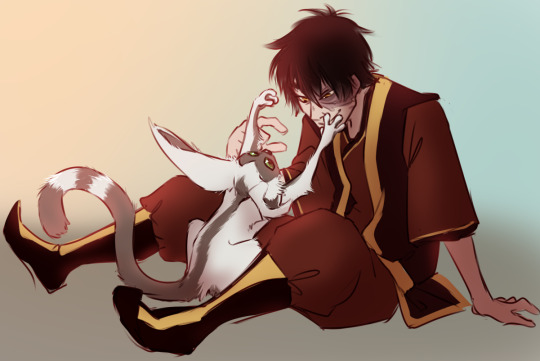Text
If you're reading this...
go write three sentences on your current writing project.
373K notes
·
View notes
Text
“Appeal to a wider audience” is corporate lingo for “strip more themes from a piece of media so it’s safer and more sanitized for investors”
182K notes
·
View notes
Text
Quick Story Pacing Tip: Pause at the Threshold
Does your story feel too rushed? One easy way to control pacing, add suspense, and cue the reader about big changes in your story is to have your main character pause at major thresholds.
Thresholds are literal or figurative doorways that a protagonist walks through at key moments of the story. They represent moments of change: On one side of the “door” the rules are totally different than on the other side. Think Harry Potter going into the Chamber of Secrets, or Katniss Everdeen getting thrown into the Hunger Games. Once those characters “crossed the line,” they couldn’t go back.
In both of those examples, you might have noticed that Collins and Rowling slowed the story down a beat. Katniss had a 60-second delay where she sized up her situation. Harry had to solve a series of puzzles to get to the door. And for good reason: They’d been moving toward that big change for pages and pages, so it would be weird to rush straight across the threshold without a moment’s pause.
So if your story feels like it’s moving at a break-neck speed, look for thresholds or turning points where you can slow down. Show us details. Add another obstacle between your character and their goal. Let us hear their thoughts, hopes, and hesitations as they move into the next phase of their story. Show us why this moment is important. We won’t get impatient–in fact, if you’ve prepared us well enough for the moment, taking a pause will only increase the suspense!
4K notes
·
View notes
Text
If you can’t think of anything to say about a fic, writers also like to know:
- what time it is
- how long you’ve been reading
- how many chapters you’ve covered in the last 24 hours
- what you were late for because you were reading
- the woeful few hours you have left to sleep
- the emotional outbreaks you’re experiencing
- the inappropriate place you’re having said outbreak
- the general public’s reaction to your outbreak
- how much phone battery you have left
90K notes
·
View notes
Text
Every writing advice ever: If you’re having trouble with a scene, skip it and write a different part of the story.
Me: If I don’t write in chronological order, I will die
40K notes
·
View notes
Photo

It is very rainy in Portland, Oregon where I live, so I’m thinking back to my California childhood…
Enjoy a new grumpy crow painting in my shop!
18K notes
·
View notes
Text
I adore that moment when you’re walking and suddenly you just have ideas. You know how to fix that plot hole. You know how that final battle is gonna play out. You come up with the most perfect line of dialogue. You find a way to link point a to point b. You have fine details to enhance everything.
That moment of sheer inspiration, that absolute spark of brain magic, is simply phenomenal.
21K notes
·
View notes
Text
Things to consider when switching POVs between chapters:
Why are you switching then
Why are you switching to who you’re switching to (particularly if you have >2 POVs)
What new information is provided by having a new POV
What information is hidden by having a new POV
How evenly are you distributing your story, POV-wise
Is a character getting more POV time because they have the more important story to tell or because you don’t know what to write for other people
How does the POV shift impact your pacing
Is it immediately clear where the POV character is/what they’re doing
Is it immediately clear who the POV character is
1K notes
·
View notes
Text
Top Tips for Clues, Red Herrings, and Breadcrumbs
One of the most important parts of writing MYSTERY is figuring out what to do with clues and red herrings - and how to use them effectively. Here’s some advice that’s never steered me wrong:
Hide the real clue before the false ones! Most people, so by extent your readers and your sleuth, tend to focus on the last piece of information presented to them. A good strategy is to mention/show your real clue and then quickly shift focus.
Do a clue cluster! Squeeze your real clue in among a whole pile of red herrings or other clues, effectively hiding it in plain sight. This works especially well with multiple suspect mysteries.
Struggling to think of what a clue could be? Try this list:
Physical objects: Letters, notes, tickets, emails, keepsakes, text messages, diaries, etc.
Dialogue: voicemail recordings, overheard conversations, hearsay, gossip, rumours. All of these can hold grains of truth!
Red herrings distract and confound your protagonist and your reader, so you should be careful not to overuse them. Well balanced, red herrings should lead your characters down false paths to create confusion, tension, and suspense.
Contradictions! Have characters claim they did so-and-so at such-and-such a time, but other characters have evidence that contradicts this.
Balance! Avoid a clue that’s so obvious it’s like a neon sign saying “Look at me, I’m a clue!” but don’t make it so obscure it’ll be missed entirely. A good clue should leave a reader saying “Damn, I should have noticed that”
19K notes
·
View notes
Text
Scene Transitions
An important part of structuring your story in any format is the transition between scenes. When not handled properly, time and/or location jumps in a narrative can become disorientating and confusing, making it harder for the audience to keep up with the action. There are three important things to focus on when transitioning between scenes: where the first scene ends, where the second scene begins, and how to connect the two.
It’s important that each scene have closure. When you leave a scene, you need to know that the goal of that scene was reached. If you leave the scene too early, before you receive that closure, your audience will be left hanging, feeling unsatisfied and off balance. You need to ‘cut away’ when the scene comes to its natural end, when everything is understood and the audience is ready to move onto the next idea. If you leave the scene too late, it drags your story, and makes it feel like the scene is longer than it is.
As with the end of a scene, the beginning of a new scene must feel natural. If you have to backtrack immediately after starting your scene in order to explain whats going on, then it means you’re not starting at the beginning of the scene. You can sometimes get away with doing this, if the reflection is placed naturally in the writing, but you shouldn’t try and push your luck. If all of your scenes start with an immediate backpedal to explain where everyone is, how they got there, and when it takes place, then you need to go back and fix some things.
Information about the change in time and location are important to include. If you didn’t, then it would be impossible for the audience to tell if, when or how these changes occurred. The most widely accepted way of transitioning between scenes is to detail the things done by the characters to go from scene A to scene B. They can do so by showing the transition between locations (“They walked the distance to the theatre, laughing the whole way”), points in time (“hours passed as she sat reading in her favorite chair”), or combinations of the two (“they drove for days, the grassy hillsides of home growing into a looming mountain range”). The information in the transition must do everything to set up the new scene that’s starting.
I am going to use a segment from “These Shallow Graves” by Jennifer Donnelly as an example of what not to do when transitioning between scenes. In chapter thirty-four, a scene is ending where the protagonist and her love interest meet secretly during a ball and make a plan for her to sneak out later that evening. The scene ends on an angsty moment as they both watch her almost arranged fiance dancing with the competitor for his affections. Chapter thirty-five immediately begins with the two of them having met up and halfway to their destination. It is then explained how the protagonist had left the party early, snuck out, and made it to the meeting point.
Feels kinda jenky huh? Here’s how we could smooth this out.
Their plan for meeting up that evening involves the protagonist telling her uncle (who an attendee) that she is feeling faint and using that as an excuse to leave the ball early. This would make more sense as a place to end the scene as it signals the beginning of the transition between locations. When she sneaks out the house is a good place to officially begin the next scene, as it signals another change in locations. Because the time spent at the protagonist’s home is not important to the overall story (her waiting for everyone to fall asleep) this could serve as the transition between the scene of the first and the scene of the second meetings. The cab ride from her house to the meeting place is also its own small transition, and is a good place to reflect on past information without interfering with anything else going on (such as dialogue and bonding between love interests).
Remember! All of the important things to keep in mind when writing scene transitions are: Know where to end a scene. Know where to begin a scene. Know how to connect the scenes.
4K notes
·
View notes
Text
“don’t reduce this female character down to a love interest” does not translate into “this female character shouldn’t have a love interest.”
preventing female characters with strong, compelling narratives from experiencing love, intimacy, and affection is just as regressive as reducing them down to sexual accessories for male characters. it assumes that women must choose between a romantic interest and depth of character and ignores a far more productive message: that women are capable of possessing both.
87K notes
·
View notes
Text
If youse writin’, you a writer. If youse written and on a break, you still a writer. If you thinking, planning, and practicing your writing, YOU A WRITER.
Fanfiction, journal writing, role-playing, drabbles/ficlets/oneshots, all count as writing. Being a published author is a (a) goal, but not a requirement. Just do you.
If you’re sitting there following blogs and supporting writeblrs, but haven’t started writing or really plan to, you’re a reader and we absolutely need you. Like, obviously, you’re essential to the whole process.
3K notes
·
View notes
Text
Tbh I don't understand this constant slamming of first drafts anymore. Like, yeah, theyre the first coat of paint, but they aren't "shitty." First drafts are the fun part? I love my first drafts. They're like little kids who don't know anything yet, or your dumbest pet who makes you smile. They're so special when they haven't really matured because they're all the fun and emotional bits you cobbled together in bursts of inspiration. They're good kids, just kinda messy and incoherent with occasional awkward statements that you nervously laugh about. That's why we call it a work in progress
3K notes
·
View notes



